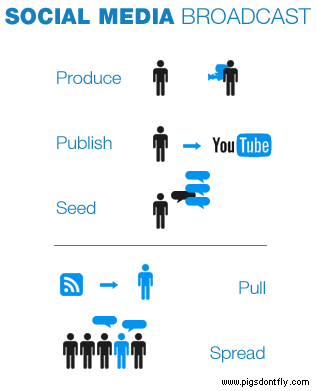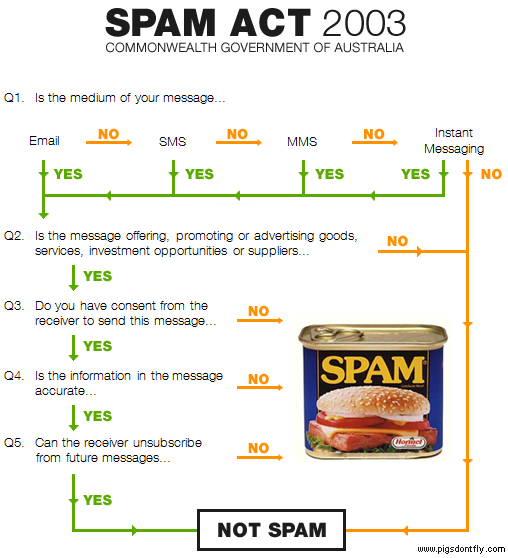After identifying two approaches when it comes to social media marketing, yesterday’s post discussed the first strategy of
Response. The second strategy, discussed below is Broadcast.

Above the line is from marketer’s point of view. Below it, is from the consumer’s.
Produce
Before anything, the marketer must firstly produce content. Ideally this should be of something remarkable and with a high social currency value. This could be a video, Facebook application, podcast, blog or any even a press release.
Publish
In order for the content to be seen it is published on sites such as YouTube, Blogger or Facebook. In some case a microsite can be as effective. Ensure the barriers of viewing are low and that the content is easily spreadable. This can be done through a number of means such as allowing embed links for videos or giving consent for consumers to mashup your content.
Seed
Seeding your published material should not be done in an interruptive manner. Spamming is definitely not an option here and one step wrong here could ruin a whole campaign. It is vital that this is done in a way that adds value to a conversation, do not seed where you are not welcome or even encouraged to do so. And most importantly, be transparent, open and honest.
Pull
New media is not about pushing content onto consumers who don’t want it. Ideally you want them pulling it from you. The Internet has allowed this to become a easy and automated process with technology such as RSS, email newsletters and even YouTube subscriptions. After seeding the content, consumers should have the option to subscribe to a feed or service. This should be consented and with the ability to unsubscribe. You know those consumers who sign up to your feed will be among the most loyal and passionate.
Spread
Once the consumers are pulling your content, it will begin to spread. Buzz will be generated and depending on the medium you might even some get some consumers producing user generated content.
Blendtec used this approach in October 2006 and it continues to remain a success with over 114,000 subscribed users on YouTube. If I ever decided to get a blender, I know which brand I’d purchase.
If you’re interested, also take a look at Julian Cole’s Social Media Marketing Framework and Laurel Papworth’s definition of Social Media. Be sure to check out my other approach Response. Please feel free to offer any thoughts or critique.
Posted by Zac Martin


